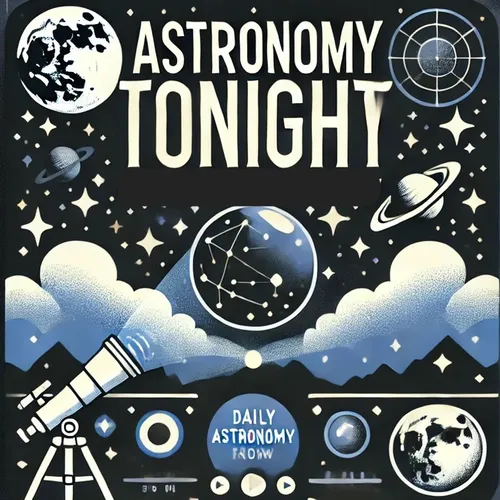Astronomy Tonight for - 09-22-2024
- Author
- Inception Point Ai
- Published
- Sun 22 Sep 2024
- Episode Link
- https://www.spreaker.com/episode/astronomy-tonight-for-09-22-2024--62065033
On September 22, 1979, a remarkable event took place that would forever change our understanding of the rings around the planet Saturn. On this day, the Pioneer 11 spacecraft made history by becoming the first human-made object to fly by Saturn, providing astronomers with an unprecedented close-up view of the gas giant and its magnificent rings.
As Pioneer 11 approached Saturn, the excitement among astronomers was palpable. The spacecraft's instruments were primed and ready to gather as much data as possible during the brief flyby. When Pioneer 11 reached its closest approach, it was a mere 21,000 kilometers (13,000 miles) from Saturn's cloud tops.
The images and data sent back by Pioneer 11 were nothing short of breathtaking. The spacecraft revealed that Saturn's rings were far more complex and dynamic than previously imagined. It discovered that the rings were composed of countless individual particles, ranging in size from tiny dust grains to large boulders. The images also showed that the rings had a intricate structure, with numerous gaps and divisions that hinted at the presence of small moons and other celestial bodies.
One of the most surprising discoveries made by Pioneer 11 was the existence of a narrow, outer ring that had never been seen before. This ring, now known as the F ring, was found to be a complex braided structure, with multiple strands that wove in and out of each other. The discovery of the F ring was a testament to the incredible resolution of Pioneer 11's instruments and the skill of the scientists who designed and operated the spacecraft.
The flyby of Pioneer 11 marked a significant milestone in the exploration of our solar system and paved the way for future missions to study Saturn and its rings in even greater detail. Today, we celebrate the anniversary of this historic event and the pioneering spirit of the scientists and engineers who made it possible. Their dedication and ingenuity continue to inspire us as we seek to unravel the mysteries of the cosmos and push the boundaries of human knowledge ever further.
This content was created in partnership and with the help of Artificial Intelligence AI
